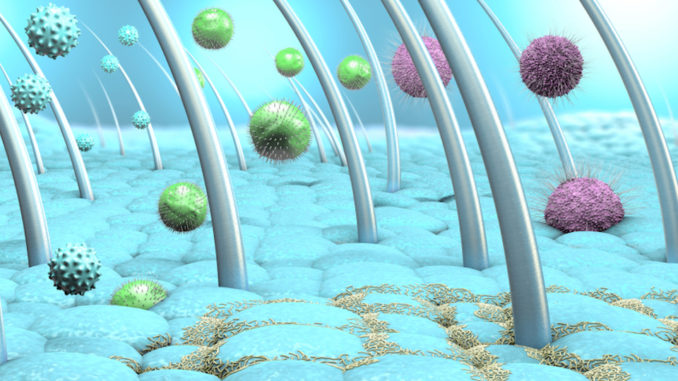
Scientists are advancing our understanding of how the skin microbiome—the diverse community of bacteria, fungi, and other microbes living on the skin’s surface—is important for skin health. Knowing what shapes the skin microbiome may provide clues on how to maintain healthier skin throughout life, but so far scientists have a limited understanding of exactly which host and environmental factors contribute to the highly variable bacterial communities on the skin.
A new epidemiology study published in the scientific journal mBio found that up to 20 percent of the variability of the bacteria on people’s skin can be explained by demographic, physiologic and lifestyle factors. The study was the largest skin microbiome survey ever published, enrolling 495 individuals between the ages of 9 and 78, and collecting over 2500 skin swab samples from four skin sites and the mouth.
“While this study was a tremendous challenge to design, execute, and analyze, it takes studies with a large base like this to tease out the important factors that impact the skin microbiome and its critical role in skin health and beauty,”
says Dr. Greg Hillebrand, Senior Principal Research Scientist at Amway, who led the study.
The research found the most influential factors associated with facial skin microbiome composition include levels of skin porphyrins – fluorescent molecules synthesized by C. acnes, the bacterium involved in the development of acne, as well as age and the use of sun protection. For the skin inside the mouth, ethnicity and smoking showed the strongest associations with its microbiome.
“The study advances our understanding of why skin microbiomes are so different from person to person,”
says first author Dr. Pedro Dimitriu, Senior Director of Bioinformatics at Microbiome Insights, Inc., which collaborated with Amway on the study.
“We know the environment outside the body influences the skin microbiome to some extent, but this study shows some of the lifestyle and host factors that shape it too.”
The study found different skin microbiome patterns that corresponded with chronological age, and others that corresponded with facial wrinkles and hyperpigmented spots. The discovery of a bacterium called Corynebacterium kroppenstedtii and its association with aging skin is the first step toward understanding how this microbe could be involved in the mechanisms of skin aging. A patent is pending on this potentially valuable finding.
